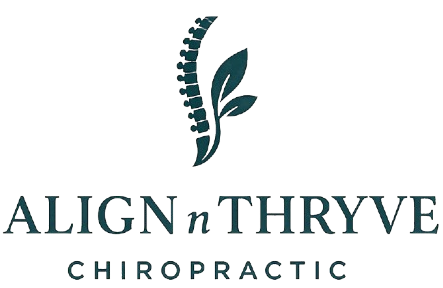Understanding the Importance of Good Posture
Good posture is often overlooked, yet it plays a fundamental role in enhancing overall health and well-being. The alignment of the body affects not only physical appearance but also physiological functioning. Maintaining an optimal posture can alleviate pressure on the spine, joints, and muscles, thereby preventing chronic pain and musculoskeletal disorders. For instance, individuals who spend long hours sitting or standing with poor alignment often experience back pain and tension in the neck and shoulders. Research indicates that poor posture can lead to significant health issues, including herniated discs and arthritis, thus highlighting the necessity of cultivating awareness around this crucial aspect of health.
The impact of posture extends beyond the physical realm; it also influences psychological well-being. Studies suggest that individuals who adopt an upright posture report improved mood and increased feelings of confidence. This conclusion stems from the body’s physiological response when standing tall, which can foster assertiveness and a more positive outlook. For example, many people encounter “power posing,” where adopting expansive body postures is associated with heightened levels of confidence and reduced stress. This correlation underscores the significant link between body language and mental state, suggesting that simple improvements in posture can result in beneficial changes in one’s emotional health.
Statistics further reinforce the importance of posture in daily life. According to the American Chiropractic Association, an estimated 80% of Americans will experience back pain at some point in their lives, largely attributed to poor postural habits. Additionally, studies show that individuals with proper posture tend to exhibit higher productivity and concentration levels compared to those who slouch. By recognizing the vital connection between good posture and health, individuals can take proactive steps towards cultivating better habits, ultimately leading to a healthier and more fulfilling life.
Common Posture Problems and Their Causes
Posture problems are increasingly common in today’s society, influenced by various lifestyle factors. Understanding these issues is crucial for maintaining good spinal health and overall well-being. Some of the most prevalent posture concerns include slouching, forward head posture, and rounded shoulders, each with distinct causes that can often be addressed through conscious adjustments.
Slouching, or excessive curvature of the spine, typically arises from prolonged sitting, especially in environments that lack proper ergonomic support. Many individuals spend extended hours at desks, resulting in a tendency to lean forward or collapse their upper body. This not only causes discomfort but can lead to chronic pain and musculoskeletal disorders over time. To combat slouching, it is imperative to take regular breaks, incorporate standing desks, and pay attention to seating arrangements.
Forward head posture, characterized by the head protruding forward relative to the spine, has become a widespread issue, particularly among those who frequently use smartphones or computers. This posture can place undue strain on the neck and shoulders, potentially leading to tension headaches and fatigue. Adjusting screen heights, employing proper alignment during usage, and utilizing ergonomic accessories can help mitigate this problem.
Rounded shoulders are another common posture issue, often the result of muscle imbalances created by sedentary lifestyles. When the chest muscles become tighter and the back muscles weaker, the shoulders tend to roll forward. This can be aggravated by activities that require repetitive motions or limited use of the upper back muscles. Engaging in targeted strengthening exercises and being mindful of shoulder positioning may help counteract this issue.
Overall, the habits we cultivate in our daily lives significantly impact our posture. Awareness of these common posture problems and their causes serves as the first step toward achieving a healthier, more aligned body, enabling individuals to incorporate corrective measures into their routines.
Effective Posture Correction Techniques
Correcting poor posture is essential for maintaining overall health and well-being. Several effective techniques can be implemented to help individuals achieve better posture. One key approach involves strengthening core and back muscles through targeted exercises. Exercises such as planks, bridges, and back extensions are particularly beneficial, as they engage the muscles that support the spine. Performing these exercises regularly not only builds strength but also enhances stability, thereby facilitating better alignment of the body.
In addition to strengthening, incorporating stretching routines plays a vital role in improving flexibility and reducing tension in the muscles. Stretching the chest, shoulders, and hip flexors is essential, as these areas often become tight due to prolonged sitting or slouching. Simple stretches like doorway chest stretches, shoulder rolls, and hip flexor stretches can help alleviate muscle tightness, promoting a more upright posture. It is advisable to include a routine that combines both strength training and flexibility exercises to ensure a balanced approach.
Ergonomic adjustments in workspaces are another significant aspect of posture correction. Ensuring that the height of desks and chairs is appropriate can help maintain a neutral spine position while working. Investing in ergonomic chairs that provide adequate lumbar support can also be helpful. Additionally, arranging computer monitors at eye level helps prevent neck strain, promoting a more comfortable working environment.
Mindfulness and posture awareness during daily activities are crucial for long-term posture improvement. Paying attention to posture while standing, walking, or using electronic devices can create a habit of maintaining proper alignment. Small reminders throughout the day can encourage individuals to check their posture regularly. By integrating these techniques into a daily routine, one can make gradual but significant progress in correcting poor posture, ultimately leading to a healthier lifestyle.
Maintaining Good Posture for the Long Term
Maintaining good posture over the long term requires a proactive approach that combines awareness, habit formation, and, when necessary, professional guidance. One of the most effective strategies is to conduct regular self-assessments of your posture. This could involve taking a moment throughout the day to check in with your body alignment, whether sitting, standing, or walking. By cultivating this self-awareness, you can identify and correct deviations from proper posture before they become ingrained patterns.
Incorporating posture-friendly habits into your daily routine is equally important. Simple practices, such as consciously engaging your core muscles and keeping your head aligned with your spine, can make a significant difference over time. Additionally, integrating short stretches or posture exercises into your schedule can help keep muscles flexible and strong, supporting optimal alignment. For instance, standing up every 30 minutes to stretch or do basic exercises will help reduce muscle strain and promote good posture.
Creating an environment that supports good posture is also essential. Consider investing in ergonomic furniture that encourages proper sitting positions, such as adjustable chairs with lumbar support and desks that can accommodate both sitting and standing. Tools such as standing desks, footrests, and monitor risers can significantly enhance your ergonomic setup, making it easier to maintain good posture throughout your workday.
Furthermore, seeking professional help through physical therapy or chiropractic care can provide additional support in your journey towards improved posture. These professionals can offer personalized advice, tailored exercises, and manipulative treatments that address specific issues, ensuring you can maintain good posture effectively. Remember, posture correction is a continuous process that benefits from a holistic approach involving self-awareness, habit modification, and professional support.

